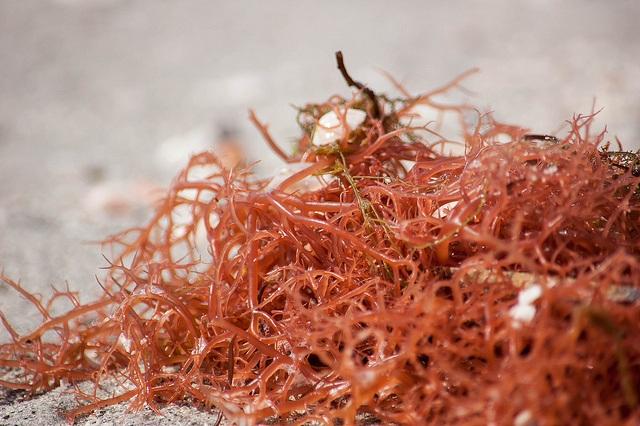
By Melissa Lang
Have a think about how much packaging you waste each year. Many of us attempt to reduce our waste through recycling. And in a survey by Cone Communications, more than 9 in 10 millennials said they would switch brands to one associated with a good cause, such as sustainability. But after Amazon came under fire for frustrating customers with over-packaged products, it still seems that retailers and packaging companies add extra materials without consideration.
It is time businesses started to think about how they can be kinder to the environment with their packaging. But how? Let’s have a look at an innovative packaging design that turned heads at Lexus Design Award 2016.
Eco-friendly packaging
Nowadays most businesses are making efforts toward eco-friendly packaging. Many companies use corrugated cardboard boxes, which are made of biodegradable material, and this is great. It is important for businesses to adapt an environmentally friendly packaging. This sends out a message to their consumers that they do care about the planet and not just about making money.Many customers become frustrated with the more packaging you give them. But it is also important to keep items safe during transit. Remember the more packaging you give your customer, the more effort they will need to put into disposing the rubbish. Separating it into different recycling bins isn't always an option either.
Lexus Design Award 2016
At this year’s Lexus Design Award, designers thought outside the box and dove straight into… the sea? Lexus was impressed by a prototype packaging product made with seaweed. This was created as an alternative to plastic and took the award for emerging designers.The design is called Agar Plasticity, and it displays the possible usefulness of agar for packaging design. The winning team is made up of three Japanese designers together known as AMAM. These designers have even been mentored by the designer Max Lamb – who is also renowned for his experimental work with materials.
What is agar?
AMAM firstly wanted to create a concept that used mouldable agar material as it could create a packaging form that would be environmentally friendly. As well as being biodegradable, agar is a sustainable raw material.The AMAM prototype substitutes plastic for agar as packaging. Agar can be found in multiple types of marine algae. The team used red seaweed (above), which is abundant in source and can be collected easily. Agar-based material dissolves in boiling water, leaving no residue.
In the future agar, is set to replace traditional disposable plastic material such as shopping bags. Unlike glass and paper, plastic simply cannot be recycled infinitely. Plastic has an estimated life cycle of between 500 and 1,000 years, a vast comparison to agar’s dissolvable quality; this is why agar is so appealing.
The designers were short-listed in November, and have been pushing the boundaries ever since. The group even sent an agar box which contained a perfume bottle from Tokyo to Milan.
The packaging prototype
AMAM's clever invention which was showcased at the Lexus Design Award exhibition in Milan and displays how the raw seaweed is could act as a functioning packaging material.This prestigious award by Lexus aims support young talent internationally. AMAM wants to promote recycled packaging and said this at the awards:
"We want to completely replace plastic products. But in the timeframe we had, we couldn't really industrialize the material," the AMAM team told Deezen. We hope that the backing of the Grand Prix winner of the Lexus Design Award will help us to get some contacts from the industry."The designers are keen to test the material for industrial purposes. Max Lamb was inspired by the idea and its problem solving abilities and was delighted to work with the team.
"It is probably the most pragmatic project there was," the team told the magazine. "It was the one that had the most genuine ambitions, and the most genuine desire to solve a problem – and that is the over-consumption and the over disposal of non-biodegradable synthetic materials."
AMAM’s goal is to completely substitute plastic packaging products with recyclable material to help eliminate unnecessary waste in the world's oceans
Lexus Design Award juror Alice Rawsthorn said the standard of each of the final projects – which included a shape-shifting dress and a magnetic lamp – was high.
The future of eco-packaging
The judges were inspired by the avant-garde ideas represented at the awards. One of the judges said:"One of the things that has been very interesting about judging the awards is that it’s almost like an annual barometer of young designers' preoccupations. Predictably, as a result, over the years more and more designers have focused on social, economic and humanitarian issues."
Utilizing these future-forward materials may not be possible for your brand right now. But sustainable products are available in the short term, such as committing to use recyclable inflatable bottle packing in the food and drink industry, or committing to only purchasing recycled cardboard for your warehouse storage needs. An advantage of purchasing only recycled products is that these products tend to often be cheaper than virgin alternatives.
Whether you believe that the future is buried deep in the sea or not, have a think about how your business can tackle over-packaging. Take inspiration by noticing how competitors are packing. What can you do to make your business packaging the best it can be? This will not only benefit the environment but will also provide great customer satisfaction as consumer mindsets shift toward sustainable living.
Image credit: 1) Pixabay 2) Michael Fagioli
Melissa Lang is freelance writer from Glasgow, Scotland. Melissa has a keen eye for all things design and in the past has consulted on business branding and marketing.
TriplePundit has published articles from over 1000 contributors. If you'd like to be a guest author, please get in touch!














